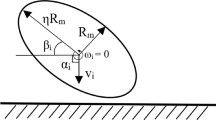Abstract
The fluid dynamic data in Andersen cascade impactor (ACI) are still lacking. Airflows and those affected parameters can be predicted in a preseparator and Andersen cascade impactor (ACI) by computational modeling. This study developed a validated computational fluid dynamic (CFD) model of an ACI and investigated the effects of the preseparator on the CFD parameters. Validation of the computational nozzle velocity for each of the stage 0 to stage 5 of the ACI stages was found to be within a 3.56% error. The flow field indicated that the preseparator accelerated the airflow velocity at the induction tube from 1.13 to 3.71 ± 0.09 m/s and 2.40 to 8.68 ± 0.16 m/s (at 28.3 and 60 L/min of flow rate, respectively). The preseparator produced a nozzle's wall shear stress ranged from 0.08 to 0.34 Pa on a collection plate, while the ex-preseparator spread wall shear from the plate's center was in a range of 0.11 to 0.37 Pa (at 28.3 L/min of flow rate). Moreover, the nozzle velocities increased along the distance from the middle of the collection plate to the periphery. The CFD explained the airflow of the preseparator equipped model by accelerating the airflow along the inlet port to maximize the trapping of desirable particles and the generation of a smooth wall shear stress at the collection plate to reduce the particle re-entrainment. While, the ex-preseparator generated an airflow that resulted in a higher wall shear stress occurring on the lower stages.








Similar content being viewed by others
References
USP30-NF25, General tests and assays: physical tests and determinations, <601>: aerosols, nasal sprays, metered-dose, and dry powder inhalers, in U.S. Pharmacopeia 2007: United States of America
Guo C et al. Comparison of delivery characteristics from a combination metered-dose inhaler using the Andersen cascade impactor and the next generation pharmaceutical impactor. J Pharm Sci. 2008;97(8):3321–34.
Nadarassan DK, Assi KH, Chrystyn H. Aerodynamic characteristics of a dry powder inhaler at low inhalation flows using a mixing inlet with an Andersen Cascade Impactor. Eur J Pharm Sci. 2010;39(5):348–54.
Wong W et al. Pharmacopeial methodologies for determining aerodynamic mass distributions of ultra-high dose inhaler medicines. J Pharm Biomed Anal. 2010;51(4):853–7.
Vinchurkar S, Longest PW, Peart J. CFD simulations of the Andersen cascade impactor: model development and effects of aerosol charge. J Aerosol Sci. 2009;40(9):807–22.
Donovan MJ et al. Dry powder inhaler device influence on carrier particle performance. J Pharm Sci. 2012;101(3):1097–107.
Kamiya A, Sakagami M, Byron PR. Cascade impactor practice for a high dose dry powder inhaler at 90 L/min: NGI versus modified 6-stage and 8-stage ACI. J Pharm Sci. 2009;98(3):1028–39.
Gulak Y et al. Numerical calibration of the Andersen cascade impactor using a single jet model. Int J Pharm. 2009;377(1):45–51.
Sethuraman VV, Hickey AJ. Evaluation of preseparator performance for the 8-stage nonviable Andersen impactor. AAPS PharmSciTech. 2001;2(1):34–52.
Bardin-Monnier N, Falk V, Marchal-Heussler L. Computational fluid dynamics: a tool to the formulation of therapeutic aerosols. Comput Aided Chem Eng. 2008;25:823–8.
Shur J et al. Effect of device design on the in vitro performance and comparability for capsule-based dry powder inhalers. AAPS J. 2012;14(4):667–76.
Huang J et al. Moving boundary simulation of airflow and micro-particle deposition in the human extra-thoracic airway under steady inspiration. Part I: airflow. Eur J Mech B Fluids. 2013;37:29–41.
Sun D et al. Numerical simulation on characteristics of airflow movement in human upper respiratory tract under fluid–solid coupling. Chin J Biomed Eng. 2012;31(1):89–95.
Wae-Hayee M, Tekasakul P, Nuntadusit C. Influence of nozzle arrangement on flow and heat transfer characteristics of arrays of circular impinging jets. Songklanakarin J Sci Technol. 2013;35(2):203–12.
Adamczyk Z et al. Kinetics of particle deposition in the radial impinging-jet cell. J Colloid Interface Sci. 2001;242(1):14–24.
Khan L, Wicklein E, Teixeira E. Validation of a three-dimensional computational fluid dynamics model of a contact tank. J Hydraul Eng. 2006;132(7):741–6.
Minson AJ, Wood CJ, Belcher RE. Experimental velocity measurements for CFD validation. J Wind Eng Ind Aerodyn. 1995;58(3):205–15.
Network, T.S.H.A.R.C. Mesh quality 2010 [cited 2013 10 June ]; 13th:[Available from: http://www.sharcnet.ca/Software/Fluent13/help/flu_ug/flu_ug_mesh_quality.html]
Andersen Inc. Operating manual for Andersen 1 ACFM non-viable ambient particle sizing samplers. Atlanta: Andersen Instruments Incorporated; 1985.
Longest P et al. Comparison of ambient and spray aerosol deposition in a standard induction port and more realistic mouth–throat geometry. J Aerosol Sci. 2008;39(7):572–91.
Morsi S, Alexander A. An investigation of particle trajectories in two-phase flow systems. J Fluid Mech. 1972;55(2):193–208.
Detry JG, et al. Computation and evaluation of wall shear stress distribution at the lower surface of a radial flow cell. International Requirements Engineering Conference (RE). 2007
Young RM, Hargather MJ, Settles GS. Shear stress and particle removal measurements of a round turbulent air jet impinging normally upon a planar wall. J Aerosol Sci. 2013;62:15–25.
Acknowledgments
We would like to thank the Drug Delivery System Excellence Center for use of their facilities. This work was supported by the Higher Education Research Promotion and National Research University Project of Thailand, Office of the Higher Education Commission. We would also like to thank the reviewers of this article and Dr Brian Hodgson for comments and assistance with the English.
Author information
Authors and Affiliations
Corresponding author
Rights and permissions
About this article
Cite this article
Dechraksa, J., Suwandecha, T., Maliwan, K. et al. The Comparison of Fluid Dynamics Parameters in an Andersen Cascade Impactor Equipped With and Without a Preseparator. AAPS PharmSciTech 15, 792–801 (2014). https://doi.org/10.1208/s12249-014-0102-2
Received:
Accepted:
Published:
Issue Date:
DOI: https://doi.org/10.1208/s12249-014-0102-2




